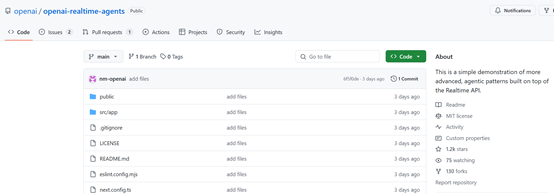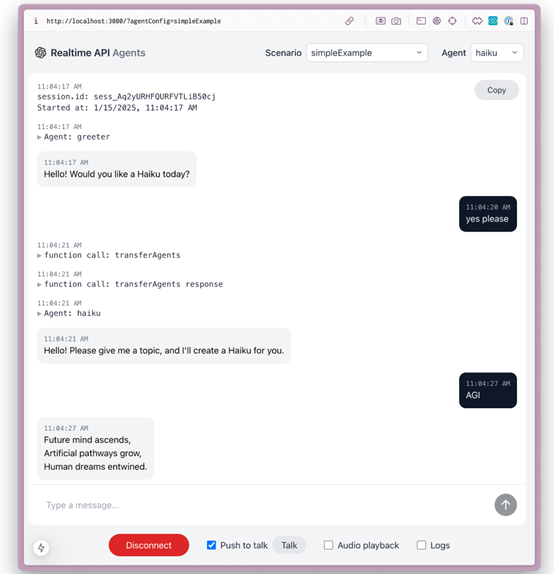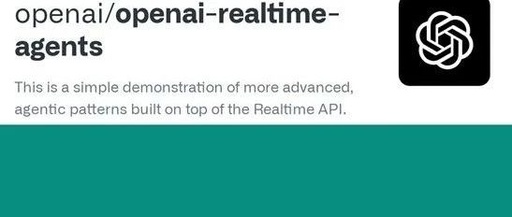OpenAI has made the source code public on GitHub. Although it is just a demo, it quickly surpassed 1200 stars, especially the high development efficiency that surprised many veterans.

Code address: https://github.com/openai/openai-realtime-agents?tab=readme-ov-file
Realtime Agent Technical Features
The Realtime Agent provides efficient data interaction capabilities, responding immediately while the user is speaking, greatly reducing wait times while optimizing data transmission and processing flows, ensuring high efficiency and low latency, which is crucial for developing voice-based intelligent agents.
Multi-Level Collaborative Agent Framework provides a predefined agent flowchart, allowing developers to quickly configure and use. Each agent has clear responsibilities and tasks, ensuring that tasks can proceed smoothly in the predetermined order, significantly reducing the time spent designing task flows from scratch.
The Realtime Agent also supports flexible task handover, allowing seamless task transfer between agents, ensuring that each step can be handled by the most suitable agent, greatly improving task processing efficiency and accuracy.
State machine-driven task processing is another major technical highlight of the Realtime Agent. By using a state machine to break complex tasks into multiple small steps, processing is done step by step. Each step has clear states and transition conditions, ensuring that tasks can be completed in order, step by step.
At the same time, the state machine can monitor the execution status of tasks in real time, adjusting based on user input and feedback. If a user encounters a problem at a certain step, the state machine can promptly adjust the task flow, provide assistance, or redirect the user.
Leveraging large models to enhance agent decision-making capabilities, when facing complex or critical task decisions, the Realtime Agent can automatically escalate tasks to more intelligent large models, such as OpenAI’s o1-mini. Developers can also choose appropriate large models based on specific task requirements.

Clear visual WebRTC interface allows users to select different scenarios and agents from a dropdown menu, viewing conversation records and event logs in real time.
Provides detailed event logs and monitoring functions, offering developers powerful debugging and optimization tools. Detailed event logs record events from the client and server. Developers can use these logs to monitor task execution status in real time, promptly identifying and resolving issues.
Real-time monitoring can quickly identify agent performance bottlenecks for specific optimizations and adjustments. For example, if a certain agent’s response time is too long, task allocation can be adjusted promptly to ensure overall system performance.
Additionally, this Realtime Agent also draws from the previously open-sourced renowned multi-level collaborative agent framework Swarm by OpenAI, making it very reliable in terms of business execution and stability.
Some netizens remarked that two months ago, they spent 2-3 hours developing a real-time voice application. Of course, Twilio API took considerable time, but being able to create a minimum viable product (MVP) in under 20 minutes is truly astonishing.

In less than 20 minutes, building a voice application prototype using a multi-agent process… jaw-dropping.

This article’s material is sourced from OpenAI. Please contact for removal if there is any infringement.
END
Report Download

